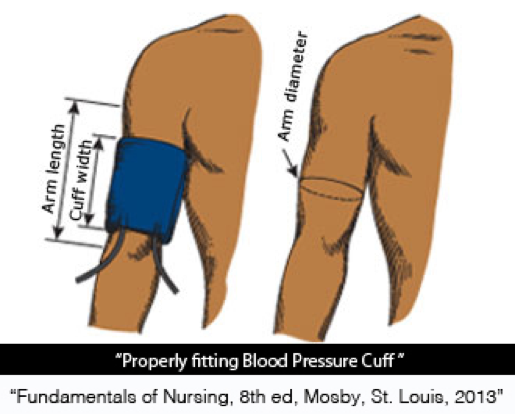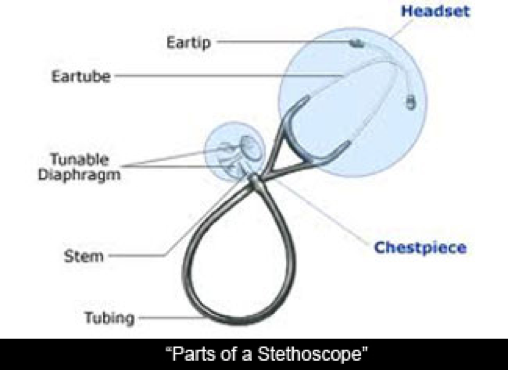Two numbers are used to describe blood pressure.
A person’s blood pressure is written with the systolic number above or before the diastolic, such as 120/80 mmHg. (The mmHg is millimeters of mercury—the units used to measure blood pressure.) The normal blood pressure for adults is a systolic blood pressure less than 120 and a diastolic blood pressure less than 80 (American Heart Association, 2012).
Blood pressure is the force of blood against the walls of arteries. Blood pressure rises and falls normally throughout the day. When blood pressure stays high over time, it is called hypertension. Hypertension is dangerous because the condition makes the heart work too hard.
American Heart Lung and Blood Institute Categories for Blood Pressure in Adults (2012) |
||
|---|---|---|
Blood Pressure Category |
Systolic (mm/Hg) |
Diastolic (mm/Hg) |
|
Normal |
Less than 120 |
...and Less than 80 |
|
Prehypertension |
120 – 139 |
...or 80 – 89 |
|
|
|
|
|
Stage I |
140 – 159 |
...or 90 – 99 |
|
Stage II |
160 or higher |
...or 100 or Higher |
A diagnosis of hypertension is never made with just one blood pressure reading. The doctor will follow a person who shows a high blood pressure reading over several weeks or months before a diagnosis is made. Prehypertension is a warning that the person may develop hypertension in the future. When a person has prehypertension, their doctor will likely have him or her visit the office more often for blood pressure checks.
About two-thirds of people over age 65 have high blood pressure. Stress, caffeine, smoking, pain, and other factors can cause blood pressure to rise for a short time. For some people, just the act of having their blood pressure taken in a doctor’s office, clinic, or hospital can cause a rise in blood pressure. At other times, their blood pressure is normal. These people have what is called "white coat hypertension".
Once the doctor decides that the person has hypertension, he or she will treat the hypertension with medicines. The doctor may also recommend not drinking caffeine, eating a low-salt diet and exercising regularly.
The selection of the right blood pressure equipment depends on a person’s arm or leg width, health condition, and ease of being able to hold their arm in the correct position. Ask their doctor for advice in selecting and using a device to monitor blood pressure in the home.
Aneroid Sphygmomanometer
The aneroid sphygmomanometer has a dial gauge that you read by looking at a pointer on the dial. You apply the cuff, inflate it and then listen with the stethoscope for sounds as you release the air in the cuff.
Electronic Monitor
The electronic monitor is either manual or automatic and the blood pressure reading flashes on a digital display screen. The American Heart Association recommends an automatic, cuff-style, bicep (upper-arm) monitor.
Finger/Wrist Monitor
Finger/wrist devices are types of electronic monitors with a cuff that wraps around the wrist or the finger. The American Heart Association does not recommend these monitors because they yield less reliable readings.
Properly Fitting Blood Pressure Cuff
Ask the doctor, nurse, pharmacist, or medical equipment technician to assist in choosing the correct blood pressure cuff size for the person you care for.
Proper blood pressure cuff sizes:
When a blood pressure cuff fits properly, the blood pressure reading will be most reliable. If the cuff is too large, the blood pressure reading may be too low. If the cuff is too narrow, the reading may be too high.
If you choose an electronic blood pressure monitor, it may not come with interchangeable cuffs. The numbers on the monitor should be easy for you to read.

Know what Blood Pressure Range the Doctor Wants
The doctor will decide what the right blood pressure is for the person you care for. In the case of an average size adult:
A stethoscope consists of two earpieces connected by a flexible tubing to a diaphragm, which is placed against the skin to hears blood pressure sounds.
If you use an aneroid sphygmomanometer, you may also need a stethoscope unless one is built into the aneroid device.
When you choose a stethoscope, look for these features:
